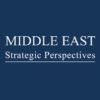By Mona Sukkarieh. Published on February 17, 2012 in PolicyMic under the title “India Chooses France Over Russia and America in One of the Biggest Military Aircraft Deals Ever“.
Although Asian states did not emerge unharmed from the global economic recession they seem sound enough to withstand the crisis. Regional dynamics and rivalries, not to mention persistent internal security imperatives, are sure to divert a big proportion of spending towards military expenditure. Chinese military expansion in recent years and covert hegemonic ambitions have fueled defense spending in East and South-East Asia. By 2016, it is believed that Asia’s military spending will account for 32% of global military spending, up from 24% in 2007, amounting to 480 billion USD.
At the heart of these dynamics lies an emerging India. Since 2003, India has seen over 8% annual GDP growth and is one of the fastest growing economies. Historic rivalry with its Pakistani neighbor has fueled competitive ambitions on both sides and resulted in dramatic events but also in some notable achievements. India is a regional power and one of the few countries to have joined the extremely restrictive nuclear club. It has one of the largest armies in the world and ranks among the major military spenders.
In 2007, it unveiled a tender for the procurement of 126 aircrafts in one of the biggest military aircrafts deals in history. 6 major bidders were in competition to win the approximately 11 billion USD contract: The Swedish Gripen, the Russian MiG-35, the French Rafale, the European Eurofighter Typhoon and the American F-16IN and F/A-18IN Super Hornet.
America’s close cooperation with Pakistan and support for its armed forces certainly didn’t help in advancing the F-16 and F/A-18 bid. Whereas the Gripen and the MiG-35 aircrafts have limited capabilities compared to other bidders. In April 2011, two bidders were logically shortlisted: Rafale and Eurofighter. On January 31, 2012, it was announced that the Rafale was selected for exclusive negotiations.
India’s French choice raised a lot of questions. Beside the price, which certainly played a decisive role, the decision seems to reflect India’s firm determination to maintain its defense autonomy. During much of the Cold War, India maintained solid cooperation with the Soviet Union, its largest arms supplier back then. In the 1970s, it acquired British Jaguars and in the 1980s, it purchased French Mirage-2000s manufactured by the same company that now produces the Rafale, in a deal that proved highly satisfactory, especially during the Kargil war against Pakistan in 1999. By choosing France, India is choosing a partner that proved to be a reliable ally. Rather than allying with a single superpower, India has opted to enhance its international profile through multilateral ties.
By the same logic, India was careful to include a clause in its initial requirements according to which the winner would deliver 18 aircrafts directly from the manufacturer while the remaining 108 would be built under license with transfer of technology by Hindustan Aeronautics Ltd. in Bangalore. Incidentally, it is that same clause that explains the lukewarm reaction to the deal in France. Part of French media did not see the benefit of a deal which, it says, not only does not create jobs but also entails transfer of technology which would eventually slow down the French industry.
A no less important factor that may have played against the Eurofighter at the final stage of the selection process is the series of scandals that appear to be linked to previous Eurofighter deals in Austria and Saudi Arabia. In a country where corrupt practices are rife, and amid a widespread anti-corruption campaign that shook the country over the past few months, officials are perfectly aware that the country’s largest ever defense deal is under scrutiny for the slightest unorthodox behavior.
Eurofighter seems to have suffered the most in this competition. Its Asian market is largely off the table and, with diminishing demand from its partner states (The UK, Germany, Italy and Spain), its only hope seem to be in the Middle East, including a possible rerun in the UAE bid. But, as the Indian competition has highlighted, bilateral negotiations are more easily led between a client and a provider rather than between a client and a consortium of partners with different interests at stake. In a way, India’s French choice will consolidate both sides’ independence: The transfer of technologies will secure Indian defense autonomy, and the sale of 126 aircrafts will ensure sustainability for France’s defense industry as it seeks to develop locally the next generation of aircrafts.
The Indian tender is an interesting case in point precisely because it highlighted a cluster of parameters that affect the decision-making process at play in a democratic country, when such large deals are involved: Beside obvious parameters such as the overall cost or technical requirements, geopolitics (regional context, choice of allies), technological prerequisites (transfer of technology to promote local industry), and of course transparency all play a role in selecting the winning candidate.
لقراءة هذا المقال باللغة العربية اضغط هنا.
